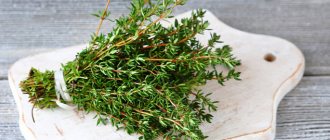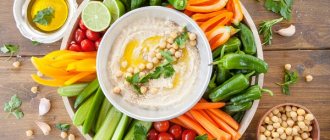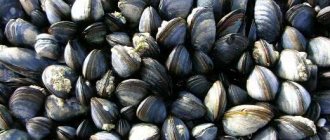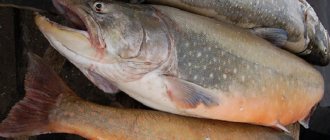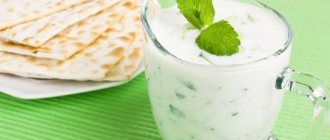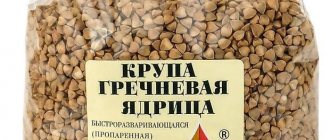Chemical composition of octopus
When eating seafood, the body is saturated with proteins, essential fatty acids, and a number of vitamins and minerals. Octopus meat can be used in the diet of people who are watching their calorie intake. It is considered dietary.
100 g of product contains:
- 14.9 g protein;
- 1 g fat;
- 2.2 g carbohydrates;
- 1.6 g of ash substances.
Ingestion of 100 g of shellfish provides 20% of the daily protein requirement. The specified seafood is a source of:
- vitamins C, K, E, A, PP, group B;
- minerals (iron, calcium, magnesium, phosphorus, zinc, potassium, sodium, selenium, copper, manganese, sulfur).
100 g contains 48 mg of cholesterol. You can appreciate the benefits of shellfish by knowing that when they are consumed, the body receives essential amino acids:
- phenylalanine;
- tryptophan;
- threonine;
- methionine;
- lysine;
- leucine;
- isoleucine;
- histidine;
- valine;
- arginine
The composition contains saturated and unsaturated fatty acids, essential amino acids. They are involved in metabolism. There will be benefits even with periodic inclusion of shellfish in the diet.
What are the benefits of octopus?
When eating octopus dishes, the body receives the necessary acids, vitamins, and minerals. Shellfish are an excellent source of protein, so their benefits cannot be overestimated. When consuming 100 g of meat, the body receives more than 800% of the daily requirement of vitamin B12. This amount provides 80% of the need for selenium, 50% for iron and copper.
There will be benefits even with occasional consumption of seafood. But their regular inclusion in the diet helps prevent a deficiency of substances necessary for the body. Cephalopods are allowed even for diabetics; their consumption does not affect blood sugar levels.
Octopuses are a source of vitamins, minerals, amino acids and other substances that have a positive effect on the functioning of many organs and systems.
Omega-3 acids, which seafood is rich in, control the functioning of the immune, reproductive, and cardiovascular systems. The benefit is that their regular use reduces the likelihood of developing atherosclerosis, hypertension, and thrombosis. People whose diet includes octopus and other seafood rarely experience heart and vascular diseases.
Under the influence of substances contained in these products:
- prevents the formation of cholesterol plaques;
- the elasticity and strength of vascular walls increases;
- calcium metabolism is regulated;
- joint condition improves;
- the body's resistance to infections increases;
- the process of transmitting impulses between neurons is stimulated;
- Concentration increases and memory improves.
The benefits of octopus for the body become visible when it is regularly included in the menu.
Attention! People whose diet contains large quantities of seafood look healthy. They are less likely to suffer from cardiovascular diseases, osteoporosis, and brain disorders.
What are the benefits of octopus for men?
Shellfish meat has a positive effect on overall health. The inclusion of a large amount of B vitamins, potassium, and fatty acids helps prevent heart attacks, strokes and other diseases associated with disruption of the heart and blood vessels. It normalizes the state of the nervous system, preventing the negative effects of stress on the body.
Recommended reading: The benefits and harms of sugar for the body
The benefits are most noticeable in men suffering from sleep disorders and depressive disorders. Substances contained in seafood have a positive effect on the nervous system.
Thanks to the inclusion of zinc and selenium, the functioning of the hormonal system improves, and testosterone begins to be produced more actively. The combination of B vitamins and these minerals enhances potency, prevents the development of erectile dysfunction and ensures proper functioning of the prostate gland.
This is not all the benefits of octopus meat for men's health. It is believed that regular inclusion of foods with Omega-3 acids in the diet reduces the risk of developing prostate and intestinal cancer.
What are the benefits of octopus for women?
Seafood improves the functioning of many systems and organs. Women need to add them to their diet just like men.
Octopus meat, when consumed regularly, normalizes the functioning of the nervous and cardiovascular systems. In old age, women whose diet included seafood may not be afraid of osteoporosis. The benefit of octopus is that the substances contained in its meat prevent the leaching of calcium from the bones.
Women are recommended to eat octopuses to reduce the risk of developing diseases of the cardiovascular and nervous systems, osteoporosis and the appearance of malignant tumors
Eating seafood triggers the production of prostaglandins in the body. They have an anti-inflammatory effect and prevent collagen destruction. The benefits are visible to the naked eye. The skin of octopus lovers will be smooth, without acne or pimples.
According to research, adding foods rich in Omega-3 acids to your diet reduces the likelihood of developing breast and ovarian cancer by 35%.
Useful properties of octopus
Octopus meat is rich in protein and contains up to 8-10% fat. The muscles contain a lot of extractive substances that give a specific flavor to an octopus dish.
Octopus meat contains vitamins A, B1, B2, B3, B6, B9, B12, C, E, K, PP. Octopus contains macro- and microelements such as calcium, magnesium, sodium, potassium, phosphorus, iron, iodine, zinc, copper, manganese, selenium.
Octopus is very healthy, since 100 grams of boiled octopus contains 350 mg. omega3 fatty acids. And these acids, as we know, are involved in many metabolic processes, and we must receive them from food every day if we want to be healthy. Plus, octopuses are delicious.
Octopus has been known for its beneficial properties and pleasant taste since ancient times. Gourmets of the ancient world cut the octopus tentacles into pieces, stuffed the head with spices and baked them into large pies. Their cooks were so masterful that when preparing this dish, they used bamboo sticks instead of knives: after all, iron knives give the delicate dish a bad taste.
In Mediterranean countries, octopuses are still one of the favorite folk treats. In Spanish and Italian cookbooks you can find a lot of different recipes for preparing octopus for the table. In Spain, “calamares fritos” are popular, that is, squid body rings baked in dough. "Calamares fritos" of stuffed octopus can be bought in any store in Barcelona. All you have to do at home is heat them up.
On the island of Ischia (near Naples) squid is cut into slices and added to soup. It is also customary here to make octopus sandwiches. Polynesians boil dried octopus in coconut milk or bake it in toro leaves in an earthen oven. In Japan, octopus is usually fried in oil.
Octopus harm
Having learned about the benefits of marine meat, many begin to include it in their diet. But before buying octopuses, you should make sure that they are harmless. The greatest danger is posed by mercury compounds that may be contained in meat. They cause poisoning. An overdose of mercury can even lead to death.
Important! When purchasing, it is advisable to check the availability of certificates and conclusions from the sanitary and epidemiological station.
You need to monitor the freshness of seafood. If not frozen, they will spoil quickly. There will be no benefit from eating such octopuses. Even after heat treatment, they can cause poisoning.
Contraindications for octopus
Before including seafood in your daily diet, you must make sure there are no contraindications. There will be no benefit from octopus tentacles if they are consumed by a person who is prohibited from eating marine meat.
Contraindications include:
- individual intolerance;
- seafood allergies;
- ulcerative lesions of the gastrointestinal tract;
- diseases of the stomach, intestines, pancreas.
In case of these pathologies, it is better to refuse meat from octopus and other marine inhabitants. Their use can provoke a deterioration of the condition, an exacerbation of allergic reactions; in this case there will be no benefit.
Rules for eating octopus
It is recommended to include octopus meat in the menu only after heat treatment. Cephalopods can be consumed raw when they have just been caught. Otherwise, there is a high risk of poisoning.
Nutritionists recommend including octopus in the menu 2-3 times a week, 200-300 g each. This amount is enough to obtain all the necessary substances and achieve maximum benefits.
To get the maximum benefit from cephalopods, it is recommended to include them in the diet every 2-3 days; eating 200-300 g per day is enough.
Before cooking, shellfish meat must be defrosted at room temperature and washed to remove mucus, cut the carcass, removing the eyes, ink sac and beak. From large specimens the skin should be scraped off with a knife; from small octopuses it is removed after heat treatment.
Boil, stew or fry these shellfish for about 7-10 minutes. Longer heat treatment leads to the fact that the meat becomes tough, although the benefits from it will be no less.
Application
Most often, only small octopuses are used for cooking. They are approximately 7 cm in size. They are added to soups and salads. They are boiled, stewed, fried and baked. Sometimes you can even find marinated octopus. And in Japan, this meat is consumed raw and is also used to make rolls.
Market Analytics
- COVID-19 is changing the rules of the game in the cosmetics market
- Beauty of the future: cosmetic innovations 2020
- New ingredients are the driving force of the cosmetics industry
Convenient search for beauty salons on our website
Beauty salons in Moscow Beauty salons in St. Petersburg Beauty salons in Ekaterinburg Beauty salons in Novosibirsk
Latest blog posts on our website
- Naturecream / Geranium (Pelargonium) oil for skin health and beauty
- Prostye-sovety / Save on a beauty salon: procedures that can be done at home
- Naturecream / Growth Factor - brings back youth?
- Oksana-Lezina / 3 effective abdominal exercises from a fitness instructor for beginners
- Prostye-sovety / Making perfect curls at home
- Prostye-sovety / Which hair removal method to choose
- Naturecream / Wrinkles Puppets
- Naturecream / PEPHA-TIGHT - instant skin lifting
- Naturecream / Blue light - a danger to the skin
- Naturecream / Cocoa Butter – A treat for the skin
Latest forum topics on our website
- Mrs._Smith / Badly sunburned! What to do?((
- Ice / Is it necessary to combine fitness classes with a diet?
- Antonova / What can be used for hair loss?
- Radio operatorKat / Who was on a protein diet?
- Suzanna / Mesotherapy on the face
Other articles in this section
| Pangasius Pangasius belongs to marine fish from the Catfish family. For some reason, it is common to mistakenly call it the tongue of the sea. It is not right. Solefish belongs to a completely different family of fish. |
| Herring in sour cream Herring belongs to the herring family, and is widely distributed in various waters. Its nutritional value and taste differ in the method and time of fishing, the type of herring and its further processing. |
| Grilled salmon This is a valuable commercial fish with an unpretentious character. The habitat is not limited to any specific conditions. Salmon can change color as easily as their lifestyle. Mountain streams of North Africa and North America, rivers of Portugal and Spain, the Atlantic and the Arctic Ocean. |
| Boiled sturgeon Sturgeon is a large fish from the sturgeon family. The size of individual individuals reaches 300 kg. The fish has an elongated body and a head tapering towards the mouth. A distinctive feature of the sturgeon is the absence of scales. Instead, the fish has several bone plates located evenly along the entire length of the body - from head to tail. |
| Stuffed river perch Perch is the most common type of fish that lives in almost any body of water. Perch meat is characterized by excellent taste and nutritional composition. Perch is very easy to prepare in any form. One common method is to prepare stuffed perch. This way the dish acquires a brighter flavor and increases its beneficial properties for the body; moreover, this is the most successful option for preparing fish for the holiday table. |
| Pelamida Pelamida (sard) belongs to the schooling species of predatory fish of the Mackerel family and includes the following subspecies: Atlantic, eastern, Chilean and Australian. Pelamida is a heat-loving fish species, so its distribution area is the shores of Africa, Australia, and South America. Numerous populations of bonito are found in the Mediterranean and Black Sea, while bonito comes to the Black Sea in the spring for spawning, and with the approach of autumn, it returns through the Bosphorus Strait to warm waters. It is worth noting that the number of bonito in the waters of the Black Sea is not constant. |
| Fugu There is an exotic dish in Japanese cuisine called “fugu fish,” which is expensive and deadly. This small fish is also called dogfish, pufferfish, fahak and diodont. Its place of residence is the Indian and Pacific oceans. It differs from other fish in that it has no scales and swims tail first. At the first danger, it inflates and turns into a ball. This sea animal is also famous for containing the poison tetrodoxin. Historians have found evidence that this fish was consumed even before our era - the ancient Japanese clearly knew even then the secret of preparing a dish from this fish. |
| Boiled cod In the cod fish family, cod occupies a dominant place. It lives in most of the Atlantic Ocean and is divided according to geographical origin into: Baltic, Pacific, White Sea, Arctic, Greenland. Caught mainly in Norway, Russia, Denmark, Canada, etc. |
| Caspian carp The difference between the characteristics and properties of these two types of fish is so small that the carp can easily be called a sea carp. Unlike freshwater carp, whose population is widespread in the basins of many European rivers, carp is not a picky fish. Easily tolerates salty sea water. He quickly gains weight by eating various foods, including plant foods. The Caspian carp does not go to the floodplains to spawn, as other types of carp do. It is one of the valuable commercial fish species. |
| Steamed mackerel Mackerel or mackerel (this is its European trade name) is a particularly valuable commercial fish. The main habitat of mackerel is the waters of the Atlantic Ocean from the northern part of the east coast to the Canary Islands. Mackerel is also found in the waters of the North and Baltic seas. Atlantic fresh mackerel is especially valued as a very tasty and healthy food product. |
Applications of octopus
Small and large shellfish can be pickled, boiled, baked, stewed, fried. They go well with vegetables, rice, and other seafood. You can improve the taste of the finished dish by lightly beating the meat first and adding soy sauce, olive oil or wine vinegar when cooking.
Octopus can be served as an independent dish or used as an ingredient in seafood soup or salad. This cooking method is popular:
- a washed and cleaned carcass weighing 500 g is cut into pieces;
- each part is rolled in flour;
- Place the slices in a frying pan with hot oil and fry for 2-3 minutes;
- add 80 g of butter, 4 tbsp. to the processed meat. l. cream, 3 chopped garlic cloves, salt, spices and 100 ml of water;
- The products are mixed and left to simmer under the lid for 5 minutes.
You can serve octopus made according to this recipe with rice or vegetables.
Stewed octopus with vegetables recipe
Required Products:
- octopus - one carcass;
- onions - 1 pc.;
- champignons - 2 kg;
- tomato paste - 2 tbsp. l.;
- carrots - 2 pcs.;
- celery - 1 pc.;
- red wine - 1 glass;
- salt;
- ground black pepper;
- vegetable oil;
- carnation.
Cooking method:
- Peel the octopus.
- Then we rinse it under cold water and cut it into portions.
- Peel the onion, cut it into cubes and fry in vegetable oil.
- Finely grate the carrots and divide the celery into small pieces.
- Pour the vegetables into the frying pan.
- Add tomato paste to it, pour in red wine and sprinkle with spices.
- Simmer for about five minutes.
- Wash the champignons and cut into thin slices.
- Fry the mushrooms along with the octopus over medium heat for 10 minutes.
- Combine vegetables and champignons with octopus.
- Cover the pan with a lid and simmer the dish until cooked.
After half an hour, turn off the stove and serve the dish.
